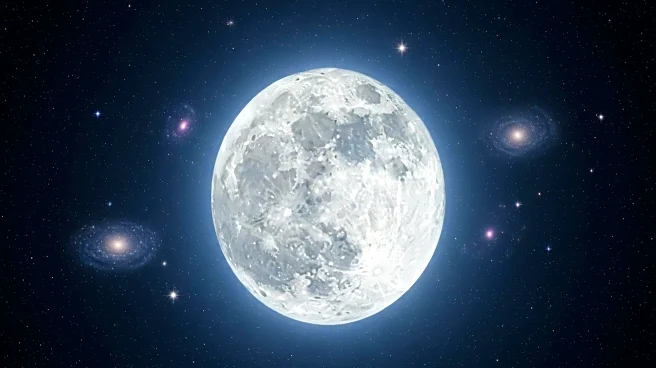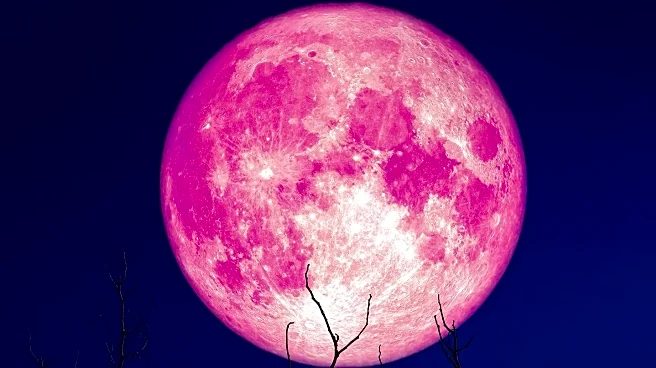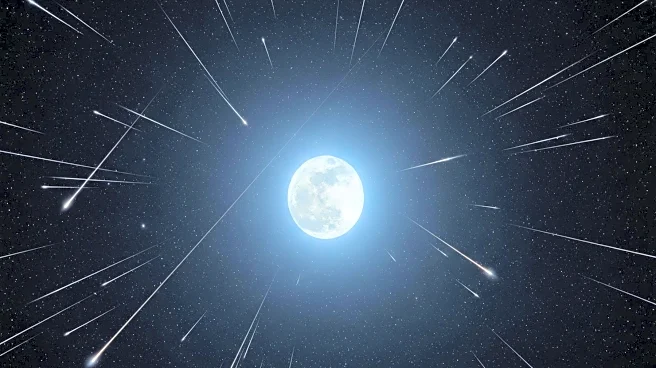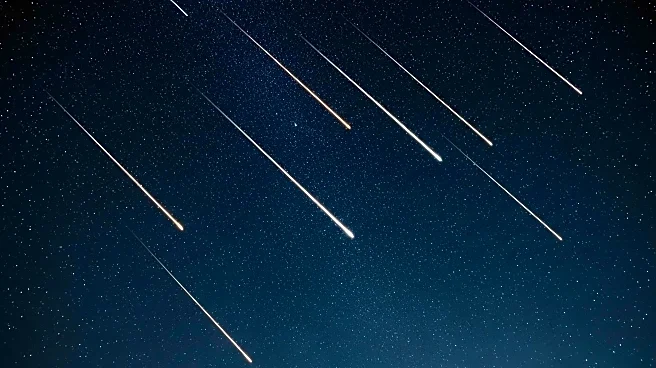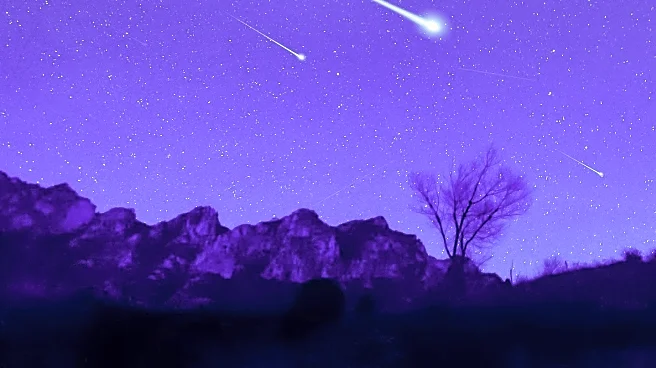What's Happening?
October's full moon, known as the Harvest Moon, will be the first supermoon of 2025, peaking on October 7. A supermoon occurs when the moon's orbit is closest to Earth, making it appear larger and brighter. This month, two meteor showers, the Draconids and the Orionids, will also be visible. The Draconid meteor shower will occur from October 6-10, though the bright supermoon may hinder viewing. The Orionid meteor shower, originating from Halley's Comet, will peak on October 21. The Harvest Moon is the full moon closest to the fall equinox, which occurred on September 22 this year.
Why It's Important?
The occurrence of a supermoon and meteor showers in October presents a unique opportunity for astronomy enthusiasts and the general public to engage with celestial events. Supermoons can appear up to 14% larger and 30% brighter than typical full moons, affecting tides and providing a spectacular visual experience. The meteor showers offer a chance to witness up to 20 meteors per hour, depending on viewing conditions. These events can inspire interest in astronomy and science, potentially influencing educational and cultural activities.
What's Next?
The Orionid meteor shower will continue to be visible until November 22, with the best viewing opportunities occurring before midnight on October 21. Weather conditions may affect visibility, with the National Weather Service predicting possible precipitation and cloudy skies in some areas. Future full moons in 2025 include the Beaver Moon on November 5 and the Cold Moon on December 4, providing additional opportunities for skywatching.
Beyond the Headlines
The cultural significance of the Harvest Moon, traditionally associated with the fall harvest, highlights the historical connection between celestial events and agricultural practices. The naming of full moons, such as the Hunter's Moon and the Freezing Moon, reflects the seasonal changes and activities of past societies. These events also underscore the importance of preserving dark skies for astronomical observation, raising awareness about light pollution.



